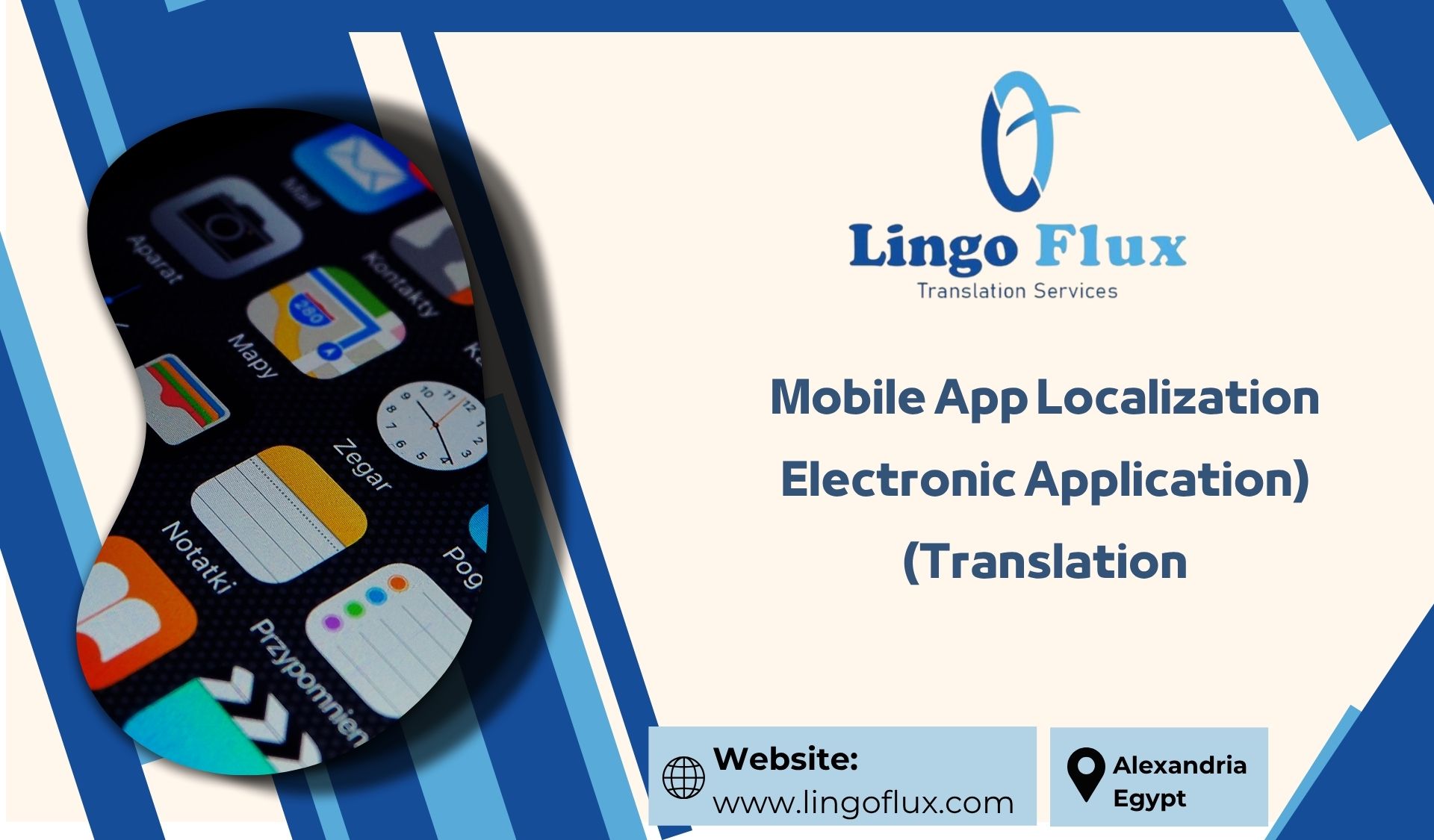Mobile App Localization (Electronic Application Translation) App localization is a fundamental strategic step for companies aiming to capture new international markets. This process goes beyond mere translation; it involves fully adapting the app’s user interface (UI), content, and user experience (UX) to the linguistic and cultural needs of the target audience.
A professional and accurate translation ensures that the app feels native to the users, which directly contributes to increased downloads, higher engagement rates, and a significant boost in global sales. Through specialized localization teams, companies guarantee that all technical and linguistic elements align with local expectations.
Mobile App Localization
Mobile app localization is the process of translating and culturally adapting a mobile application to a specific foreign market. This includes translating all text within the interface, user messages, notifications, application store descriptions, and adapting local elements such as currency, date formats, measurement units, and imagery. The goal is to make the app appear as if it was originally created for the target market.
The Importance of App Localization
App localization is critical for several reasons that directly impact an app’s success:
- Expanding the User Base Globally: Localization breaks down the language barrier, allowing the app to reach billions of potential users who prefer to use applications in their native language.
- Boosting App Store Optimization (ASO): Translating the app’s name, description, and keywords into multiple languages significantly improves its visibility and ranking in local app stores, leading to more organic downloads.
- Enhancing User Experience (UX): Users are more likely to engage with and retain an app that speaks their language fluently and respects their cultural norms. A poor or inaccurate translation leads to confusion and high uninstall rates.
- Increasing Revenue and Conversion Rates: Localized apps often show higher conversion rates for in-app purchases and subscriptions, as users trust and value products presented clearly in their language.
- Gaining a Competitive Edge: In many markets, localized apps stand out from non-localized competitors, establishing the company as a credible and user-focused brand.
Key Challenges in App Localization
While essential, app localization presents several technical and linguistic challenges:
- Contextual Translation: Translators must understand the context of short strings (like buttons or labels) to avoid awkward or incorrect translations, especially when dealing with languages that have complex grammar (e.g., German, Arabic).
- Text Expansion and Contraction: When translating from English, text often expands (e.g., into German or Spanish) or contracts (e.g., into some Asian languages). The localized UI must accommodate these length variations without layout issues.
- Right-to-Left (RTL) Languages: Localizing for languages like Arabic, Hebrew, or Persian requires reversing the entire user interface layout, including the alignment of text, icons, and menus.
- Cultural Sensitivity: Colors, symbols, images, and examples used in the app must be culturally appropriate to avoid unintended offense or confusion in the target market.
- Technical Integration (i18n): The app’s source code must be properly prepared for localization (internationalization or i18n) by separating the text strings from the code itself.
- Maintaining Consistency: Ensuring that technical terms and product names are translated consistently across the app, marketing materials, and support documentation.
Best Practices for Successful App Localization
To overcome these challenges and achieve high-quality localization, professional practices must be followed:
- Internationalization (i18n) First: Design the app’s architecture to handle multiple languages and scripts from the start, using specialized resource files (like
.strings,.xml, or.jsonfiles) for all translatable content. - Use Professional Localization Tools (CAT Tools): Utilize Computer-Assisted Translation tools (CAT tools) and Translation Management Systems (TMS) to manage terminology (glossaries) and ensure consistency (translation memory).
- Provide Context to Translators: Always provide screenshots, usage instructions, and glossaries to translators so they understand where each string appears in the app.
- Choose Native, Specialist Translators: Use translators who are native speakers of the target language and have experience in app localization, understanding both technical jargon and UI/UX constraints.
- Thorough Quality Assurance (LQA): Conduct Linguistic Quality Assurance (LQA) by testing the app on devices to check for:
- Truncation: Text being cut off.
- Layout Issues: Overlapping or broken UI elements.
- Cultural and Tonal Errors: Ensuring the tone and style are appropriate.
- RTL Flips: Verifying correct mirroring for Right-to-Left languages.
- Localize Marketing Materials: Translate the app store page, promotional videos, and support materials to match the localized app version.
- Iterative Localization: Plan for ongoing localization as new features, updates, and content are added to the app.
App localization is an indispensable investment for any tech company with global aspirations. It is a complex, yet highly rewarding, process that requires a seamless blend of technical expertise and linguistic mastery.
By partnering with a specialized localization provider like Lingoflux, companies can successfully adapt their apps to diverse markets, leading to increased user engagement, stronger brand presence, and exponential growth in the global digital economy. The commitment to a truly local user experience is what ultimately transforms a good app into a globally successful one. Contact Us.


